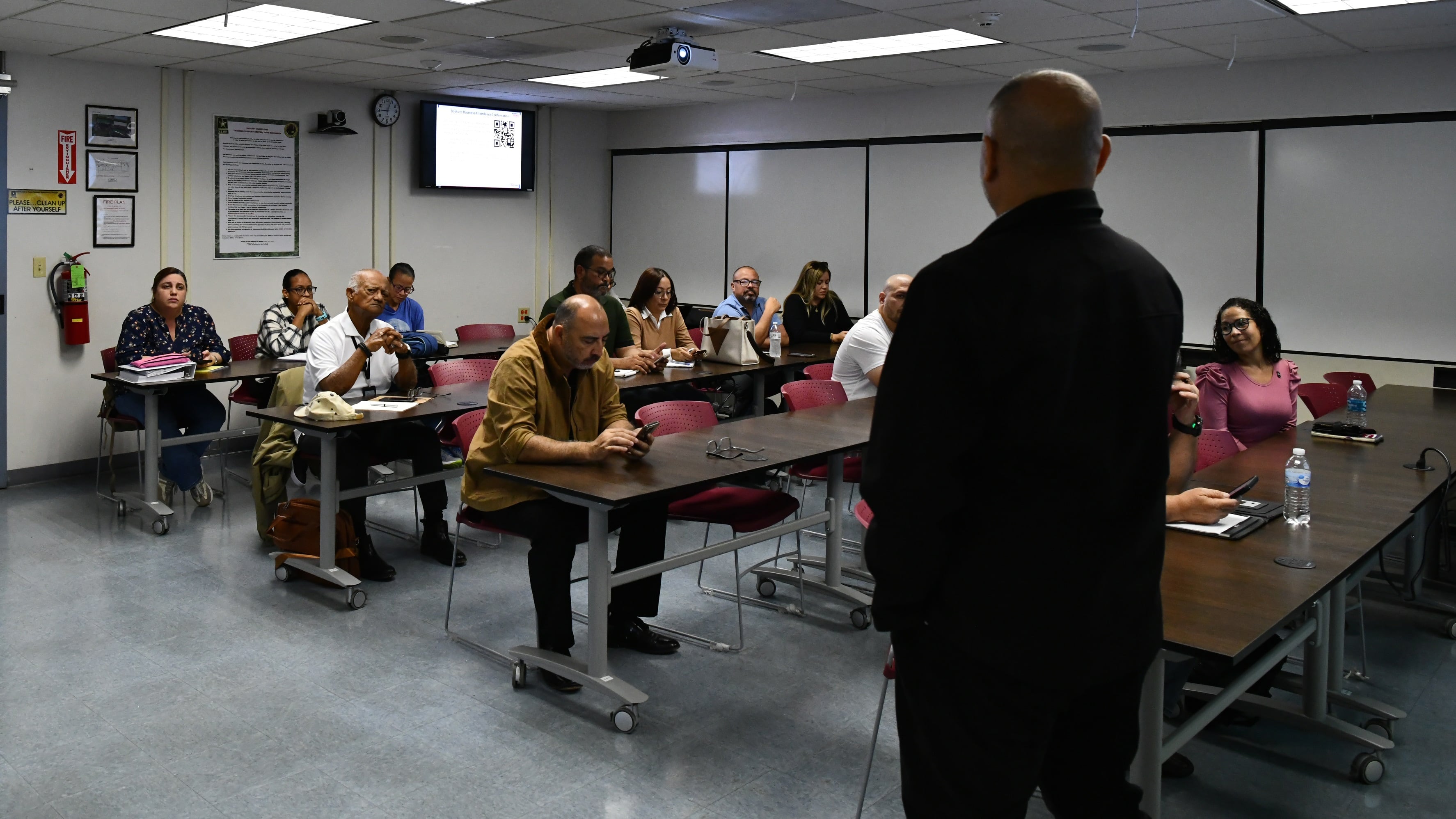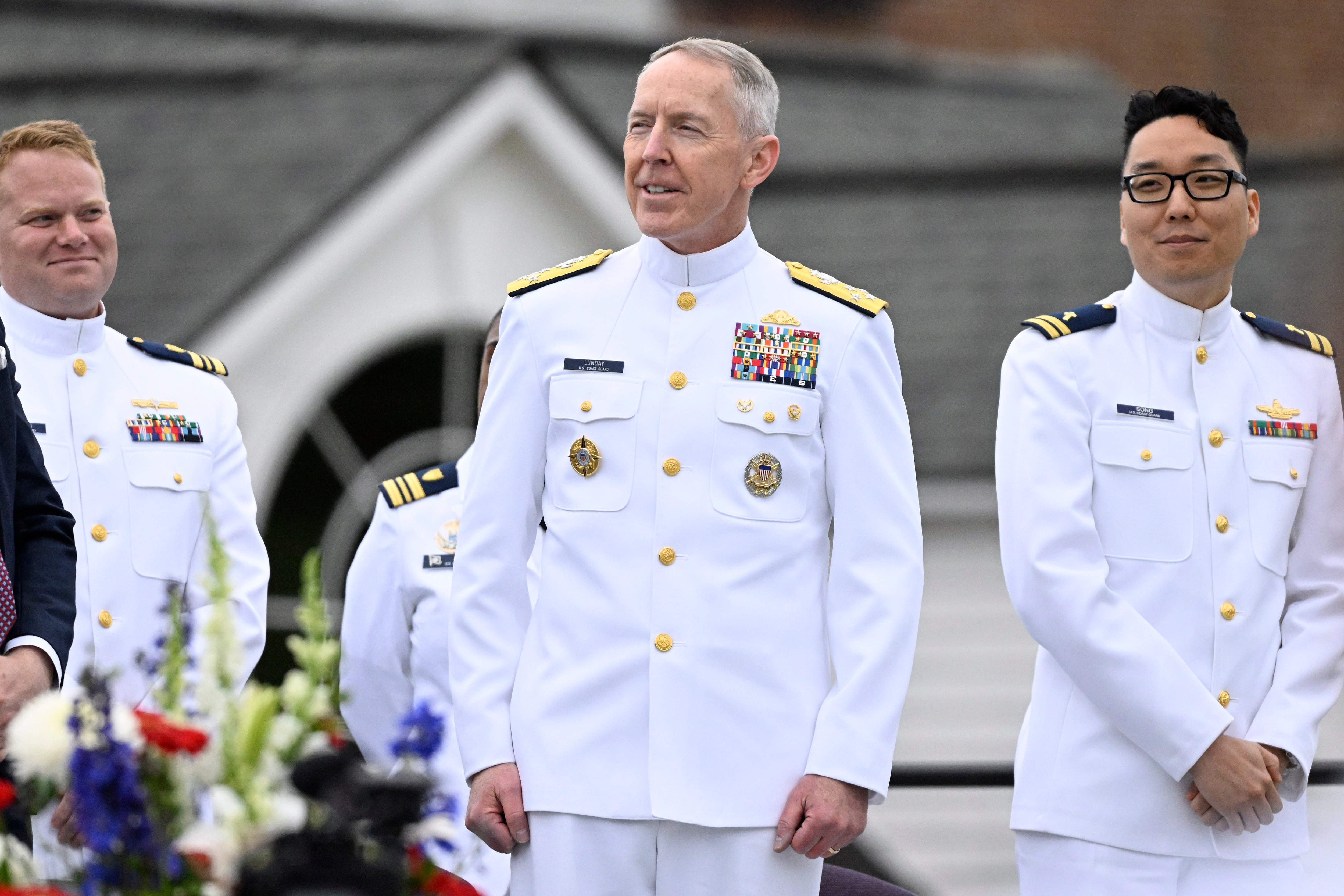Forget about There is no more "the tip of the spear."
Multi-faceted missions can run the gamut from humanitarian assistance to law enforcement and can involve many different agencies or approaches involve multiple agencies and need many tips that can penetrate on demand — so the blue-green team has built a new spear.
Like the weapon of old, It requires the staffing to be nimble but much smaller than, say, that needed for a full-on amphibious assault. Enter the right staff to provide control needed to ensure tips hit their mark. The new staff is called a "fly-in command element."
It cuts the Having cut the footprint of the traditional control element from a few hundred staffers aboard an amphibious ship to less than a few dozen and can establishestimate on-scene command within 48 hours of an incident or crisis. , this lean and specialized team can establish on-site command and control in 48 hours.
Composed of Navy and Marine staffers, the FICE can expand as needed and transition to a joint warfighting headquarters; it's and is designed to . But its key strength is the ability to handle rapidly aggregating forward-deployed forces tasked with a myriad of missions. In the "new normal" of amphibious operations, these simultaneous missions could range from humanitarian assistance and disaster response to integrated fire support and forcible entry complemented by special operations or coalition forces.
The FICE concept was validated at Exercise Bold Alligator 14, which concluded in early November. The massive, biennial amphibious exercise threw multiple crisis response scenarios at participants. When political unrest and violent extremist activity threatened the local populace, the scope of the problem required forces beyond those deployed in the three-ship Iwo Jima Amphibious Ready Group.
That's where the FICE came in. Enter the FICE.
Led by Maj. Gen. Richard Simcock, commanding general of 2nd Marine Expeditionary Brigade and deputy commander of II Marine Expeditionary Force, and Rear Adm. Cynthia Thebaud, commander of Expeditionary Strike Group 2, the FICE on Oct. 28 landed aboard the amphibious assault ship Iwo Jima on Oct. 28. Simcock and Thebaud were accompanied by core staffs of about 12 personnel each.
Within 24 hours of receiving the call, the team was providing command and control to 11,000 U.S. and international sailors and Marines and 13 surface combatants, and coordinating with seven staffs that would ultimately operate in the region.
The FICE managed operational level actions while subordinate units focused on tactical level actions. It used chat, video teleconferencing, email and phone calls to communicate with the rest of the command team, which was embarking aboard the amphibious assault ship Kearsarge. In all, the command team executed 17 missions in 10 days without prior knowledge of mission requirements.
"I wasn't so much a commanding general of a brigade-level Marine air-ground task force, or MAGTF, as I was a commanding general of multiple MAGTFs," Simcock said.
It was soon evident the small FICE staff had to be as flexible as the forces it commanded. At one point, logisticians helped with information management while a Marine staff judge advocate worked on orders development. The flag secretary stood battle watch and an aviator was the lead planner for the maritime exercise.
No FICE will look like its predecessor. Simcock and Thebaud said each must be developed according to mission requirements, battle space and forces assigned. The need to understand the commander's intent and implicit communication could not be understated, they said.
The Kearsarge ARG got underway on Oct. 29 with the remainder of the ESG-2 staff, which had facilitated warfighting functions from the rear. It arrived in theater two days later, and the FICE joined the rest of the staff aboard Kearsarge.
However, a focus moving forward is to embed aboard non-traditional platforms such as pre-positioning ships, mobile landing platforms, joint high-speed vessels and even tankers. This will prevent the displacement of on-site MAGTF and Navy staffs, officials said. But the use of Military Sealift Command is also born of necessity. The amphibious fleet is woefully short of gray hulls, and these vessels are likely to be called forward in coming years. As such, the Navy during Bold Alligator used the dry cargo / Ammunition ship Medgar Evers as an alternate command, control, operational and logistics platform.





